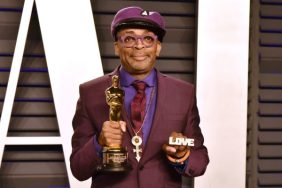When it was announced that Spike Lee was going to remake writer-director/under-sung film hero Bill Gunn’s 1973 cult classic Ganja & Hess, even Lee’s most ardent defenders were given pause. Gunn’s film is an inspired retooling of vampire mythology, through which he explored race, gender, class, capitalism, and the complicated nature of desire, in an intellectually rigorous, artistically complex manner. The film had a tortured existence of its own, which only deepened its power as a cult item over the years.
Lee’s remake, Da Sweet Blood Of Jesus, was a well-cast, well-intentioned, plodding bore. Though Ganja & Hess has been available on DVD for a while now (and Kino released a restored, remastered version in 2012), any chance to see it on the big screen should be seized. For Los Angeles film buffs, that chance will occur later this month as the film plays as part of the must-see film series Tell It Like It Is: Black Independents in New York: 1968-1986, hosted by the UCLA Film Archive at the Billy Wilder Theater in the Hammer Museum.

Check Out: Outfest 2015: Your Six Best Bets
The series that Los Angeles will see is a slightly smaller version of the same-titled retrospective curated by Michelle Materre and Jake Perlin, and presented by the Film Society of Lincoln Center in New York last year. One goal of Tell It Like It Is was to expand how we think about American film and filmmakers by illuminating the rich history and lineage of independent black film and filmmakers, specifically from New York, against the backdrop of mainstream Hollywood and America. New York serves as both a setting for the films and a character in its own right.

In addition to Maple’s Will and Lee’s films (the short Joe’s “Bed-Stuy Barbershop: We Cut Heads;” She’s Gotta Have It), Los Angeles will get a chance to see a host of extraordinary films little known beyond the world of cineastes and connoisseurs of black film. The lineup spans works that never received theatrical release (Kathleen Collins’ Losing Ground) to classics that merit much larger viewership (Symbiopsychotaxoplasm: Take One; I Remember Harlem) and many more. Click here for the full schedule.
As a special treat for Los Angeles, the opening night double-bill Losing Ground and Suzanne, Suzanne will include a conversation by filmmakers/activists Julie Dash and Peggy Dammond Preacely.
CraveOnline recently spoke with Shannon Kelley, Head of Public Programs for the UCLA Film & Television Archive, so he could explain the significance of Tell It Like It Is for contemporary film fans.

Crave: Can you explain why this retrospective is important, and why the Archive wanted to host it?
Shannon Kelley: The cinematic legacy outlined in this series offers crucial insight into the gathering of a collective energy in New York’s independent scene. That scene helped bring African American representation in film to a plateau accommodating complexity, social relevance, and distinction after decades of reductive mainstream representations – and in the face of such social cataclysms as the assassination of Dr. Martin Luther King, Jr.
Developments in the New York scene brought to light, and put in motion, artists and messages that pronounced a socially conscious, sophisticated, powerful engagement with history and society. It did all this while registering artistic triumphs and important advances in distribution and exposure. These successes include the events that bookend the program: 1) the establishment of black-controlled television newsmagazine programming (which fostered important talents and collaborations), and 2) the emergence of Spike Lee as an artist and protagonist in mass media culture. Artistically, the program varies widely in its lineup of fiction and documentary subjects, each expressed in a variety of modes.
Can you, historicize or contextualize these films within the context of American film-making, in general, and then black American film-making specifically?

The collective legacy of these artists forms a fascinating complement to that of the “L.A. Rebellion” group of Black filmmakers who also developed a momentous legacy and collective movement from a central point at UCLA over many of the same years; one which should now invite scholarship and critical appraisal. It also runs parallel to developments among filmmakers of various ethnic communities, particularly in response to varied Liberation struggles and to the Vietnam War.
How does this program fit with goals or the mission statement of UCLA Film Archive film programming?
The Archive’s public programming seeks to serve and illuminate the past, present and future with its offerings – to illuminate both the historical and the trans-historical within moving image culture. The historical works in Tell It Like It Is shimmer with energy and ideas that illustrate the lineage of later developments in media and communication, including the consolidation of a public notion of Black self-determination in media-making. The program strongly positions the filmmakers as active subjects within an objectifying media landscape and critical discourse in which Black communities often stood in as supposed recipients of history rather than as actors within it. No less, it introduces the filmmakers as artists of rich and unique gifts. Finally, it points up important arrivals in social consciousness and critique within media production – consciousness and critique which have been too seldom taken up again with the same tenacity or vigor.
Tell It Like It Is: Black Independents in New York: 1968-1986 runs from July 18 – August 13, 2015.
Ernest Hardy is a Sundance Fellow whose music and film criticism have appeared in the New YorkTimes, the Village Voice, Vibe, Rolling Stone, LA Times, and LA Weekly. His collection of criticism,Blood Beats Vol. 1: Demos, Remixes and Extended Versions (2006) was a recipient of the 2007 PEN / Beyond Margins Award.






